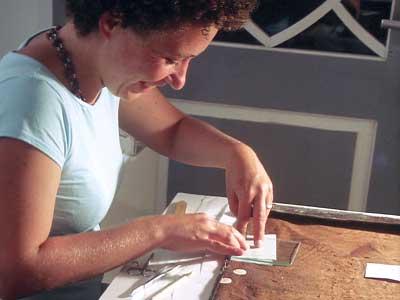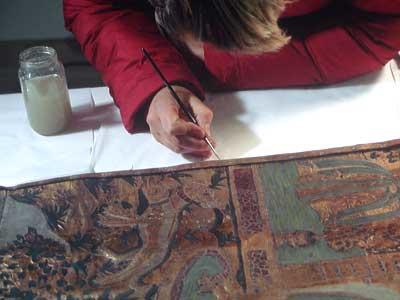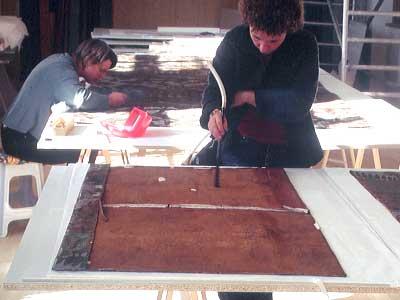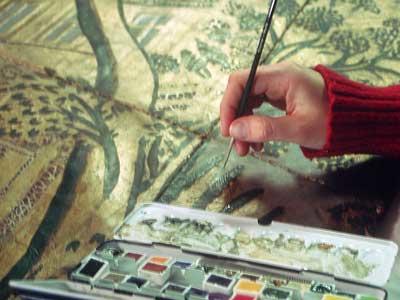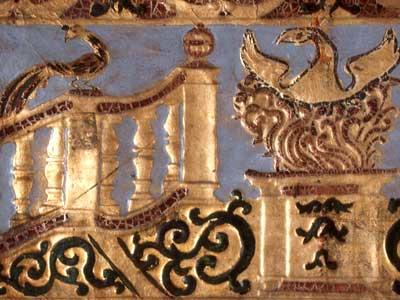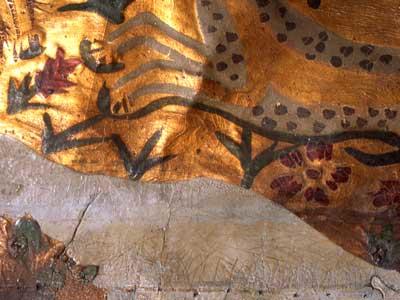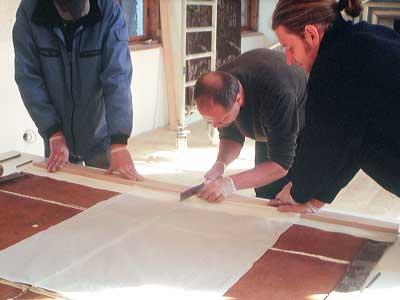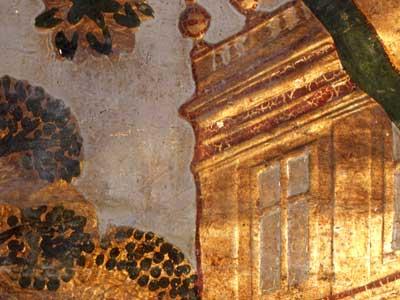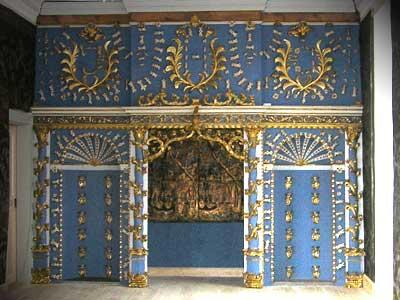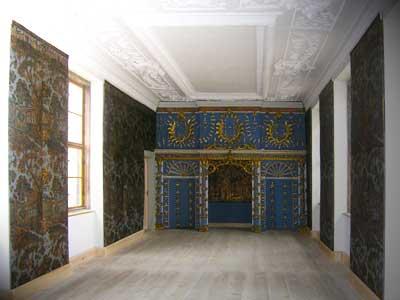Oranienbaum Wörlitz
A royal estate near Dessau in Saxony-Anhalt, Oranienbaum Wörlitz was built for Princess Henriette Catharina von Nassau-Oranien and her husband, Johann Georg II von Anhalt-Dessau, beginning in 1681. The princess was from the Netherlands, and was responsible for the inclusion of Dutch artisans and practices in the design. In the tearoom, leather wall hangings adorn the wall between windows, a Dutch style of décor. Made in Holland in 1700, the gilded leather panels are painted with hunting scenes that feature birds, trees, and fountains. The room also boasts a stucco ceiling, a grand mantelpiece, and an alcove with a Chinese teapot collection.
World Monuments Fund encouraged the effort to revitalize the entire castle
Though Oranienbaum Wörlitz had not been altered since the seventeenth century, the castle was occupied by a series of German organizations that neglected to maintain it and, as a result, its interiors deteriorated. As a step toward conservation, the castle was emptied and cleaned by Kulturlanshaft Gartenreich Dessau Wörlitz. A 2003 survey of the leather wall hangings in the tearoom inventoried their poor condition; subsequently the hangings were cleaned and treated, holes were repaired, and the painted surfaces were retouched. World Monuments Fund contributed toward conservation of the panels, and encouraged the larger effort to revitalize the entire castle. A maintenance staff was trained to care for the panels, while detectors were installed to monitor the climate of the tearoom. All work on the project was completed in 2007. The leather tapestries hanging in the tearoom of Oranienbaum Wörlitz are one of Germany’s only surviving examples of the new style of Dutch art and architecture introduced by Princess Henriette. Conservation of the tearoom was a successful pilot project designed to spark interest in conserving the estate, opening it to the public, and expanding access to its architectural splendor.

